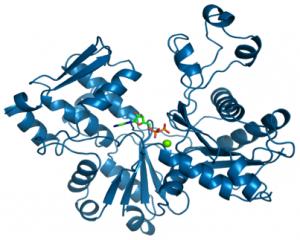All living organisms can be divided into three domains of life – Eukaryota, Bacteria, and Archaea. Archaea share properties with both eukaryotes and bacteria. The information processing systems – replication, transcription, and translation – are eukaryotic-like, while transcription factors and the organization of genes into operons, for example, are mainly bacterial-like. For a majority of archaeal proteins involved in information storage and transfer processes there are homologous counterparts in the eukaryotic cell. This makes the ‘simpler’ archaeal systems suitable as models for the corresponding eukaryotic processes.
The goal of the project is to determine the structural and functional properties of a series of proteins involved in central cellular processes such as cell division and mitosis, and also the first actin cytoskeleton described for Archaea.
Literature
-
![[DOI]](https://lmb.icm.uu.se/wp-content/plugins/papercite/img/external.png) A. Lindas, M. Chruszcz, R. Bernander, and K. Valegard, “Structure Of Crenactin, An Archaeal Actin Homologue Active At 90 Degrees,” Acta Crystallographica Section D-Biological Crystallography, vol. 70, pp. 492-500, 2014.
A. Lindas, M. Chruszcz, R. Bernander, and K. Valegard, “Structure Of Crenactin, An Archaeal Actin Homologue Active At 90 Degrees,” Acta Crystallographica Section D-Biological Crystallography, vol. 70, pp. 492-500, 2014.
[Bibtex]@ARTICLE{0, author = "Lindas, Ann-Christin and Chruszcz, Maksymilian and Bernander, Rolf and Valegard, Karin", title = "Structure Of Crenactin, An Archaeal Actin Homologue Active At 90 Degrees", journal = "Acta Crystallographica Section D-Biological Crystallography", volume = "70", doi = {10.1107/S1399004714000935}, year = {2014}, pages = {492--500}, }

